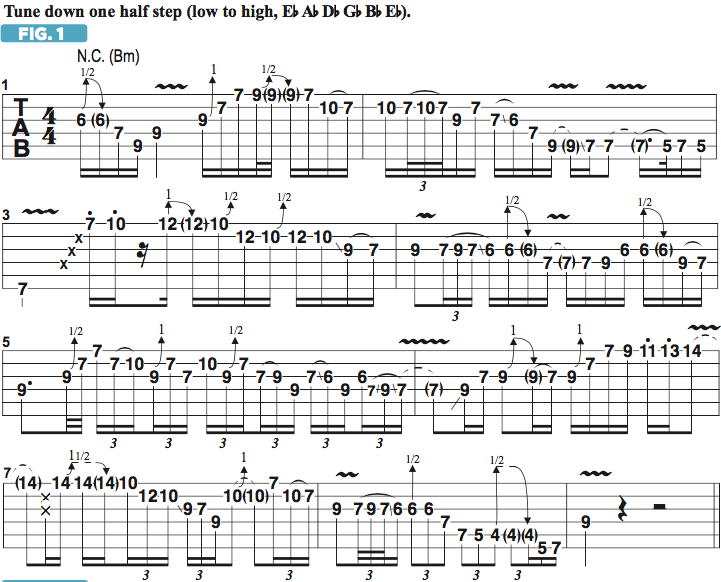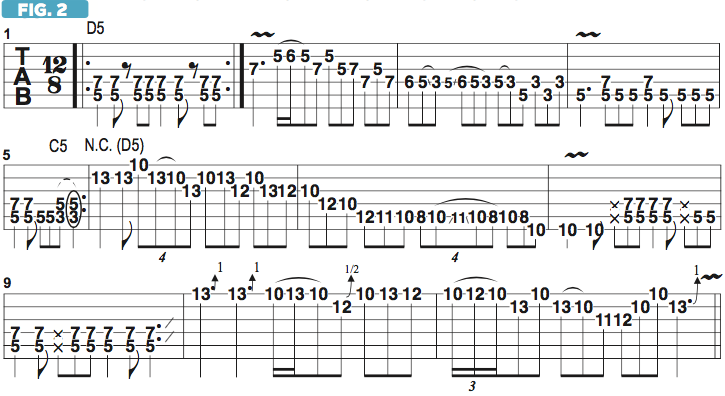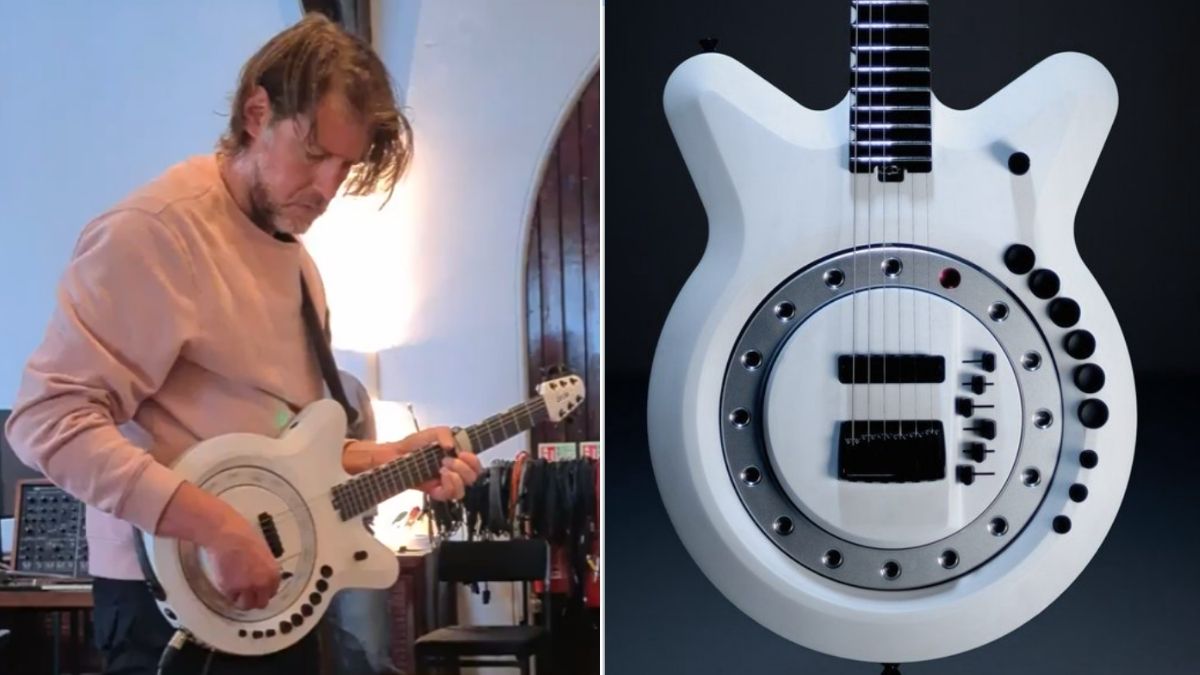Your Heroes and Your Own Sound
Learn how to use others' guitar styles in your playing while still creating something unique from our newest columnist, Judas Priest's Richie Faulkner!
Hello, everyone, and welcome to my new column for Guitar World. As a longtime fan of the magazine and someone who has learned a great deal from its pages, it’s an honor to join the ranks as an instructional columnist! I sincerely hope this series of lessons will prove useful to you.
Anyone who has heard me play can probably guess who my musical influences are because I wear them proudly on my sleeve. Zakk Wylde, Jimi Hendrix, Dave Murray, Randy Rhoads, Brian May, Michael Schenker, and, of course, Glenn Tipton—all of these brilliant players have influenced my approach to the instrument. Hopefully, as all of these sounds and approaches are distilled, something comes out in another way that represents my own musical personality. It’s a wonderful journey, and the further I travel in my career, the more I feel I’m forging my own distinctive musical voice.
When I was younger, it was more about how fast, flashy and impressive one could play. But the secret of it all, I think, is really the space between the notes. One’s own fingerprint has a better chance to shine through as a note is held, or in the way each phrase follows the next in the telling of a musical story. Speed is great, but it’s just one tool in the box.
Michael Schenker’s playing in UFO is a classic example of what I’m talking about here. His note choice, spacing, phrasing, technique and articulation offer a master class in expressive lead guitar playing. FIGURE 1 is an improvised example of soloing in Schenker’s style: the lines are based primarily on B minor pentatonic (B D E F# A) with the inclusion of the ninth, or second, C#. Throughout this demonstration, I follow a flurry of notes by lingering on one, adding expressive vibrato, and then leaving space between the phrases so that, like a good story teller, I’m “speaking” in cohesive sentences.

Articulation is tremendously important as well. I like to include pick scrapes, as in bar 2, on beat one; ghost-bends, or pre-bends, for which a note is bent first, then picked and released; gradual bends; fast or slow vibratos; quick hammer/pulls and slides; a sharp, staccato attack and whatnot. if I were to speak to you at a million miles on hour in a monotone voice, whatever I’m saying would fail to grab your attention. But if I speak expressively, in clearly defined phrases, I will be better able to get my point across. An effective guitar solo works the same way.
FIGURE 2 offers another example in Michael’s style, wherein I alternate between rhythm guitar and solo lines, played with a triplet-based 12/8 feel. As you listen and play along, keep in mind that a less-saturated/distorted tone will better serve the many articulation variables in your pick attack.

All the latest guitar news, interviews, lessons, reviews, deals and more, direct to your inbox!
